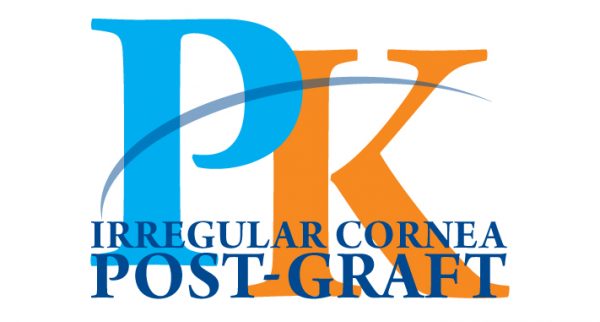Pk rgp design
Corneal lenses of the PK range are indicated in post-operative situations with a significant alteration of corneal morphology, such as Keratoplastic – Penetrating (PK) or Lamellar (LK) – and Radial Keratotomy (RK). The particular reverse geometry presents different developments, chosen on topographical characteristics; the entity of the inversion expressed in millimeters is identified by the initials: PK6, PK9, PK12.

Trial Set
The PK application system is structured in Trial-Set with three levels of inversion (from -0,60 to -1,20mm); this organization allows the applicator to select the design in relation to the type of profile: the BC is determined on an ophthalmological basis, while the most appropriate reverse curve value is defined in relation to the fluoroscopic pattern.
PK6
It has an ideal course in oblate corneas, with a small variation in shape between the central and peripheral parts; the reverse curve of -0,60mm on the base radius allows easier adaptation in the keratoplastic PK and LK with more regular alignment.
PK9
The model has an reverse curve of -0,90mm on the value of BC and represents the first fitting option in the corneas subjected to penetrating keratoplasty (PK) with protruse flap, in which the oblate profile presents a less linear and continuous combination.
PK12
Ideal in particularly irregular post-operative situations, characterized by a severely oblate profile, such as radial keratotomy and PK with protused flap. The reverse value -1,20mm determines a significant geometric variation that promotes positioning and stability.
Indicazioni d’uso
– Post-operative situations such as: PK, LK, RK.
– Oblate profile, uneven and mismatch.
fitting procedures
- Observe the topography – absolute scale, tangential map – and in biomicroscopy the profile of the cornea, to evaluate the oblate trend and in the keratoplastic the type of approach.
- Select from the set as the first test lac a PK9 of base radius 0,20/0,30mm narrower than the corneal FlatK parameter (SIM-K).
- Evaluate the fluoroscopic pattern in slit lamp, verifying the central alignment and the peripheral landing: if the lens is flat in one of the two sectors, select a narrower radius and/or switch to a greater reverse curve: PK9 or PK12.
- In case of partial alignment on one of the main meridians, or in a specific area, consider the Back Toric or Free Form productive option.


